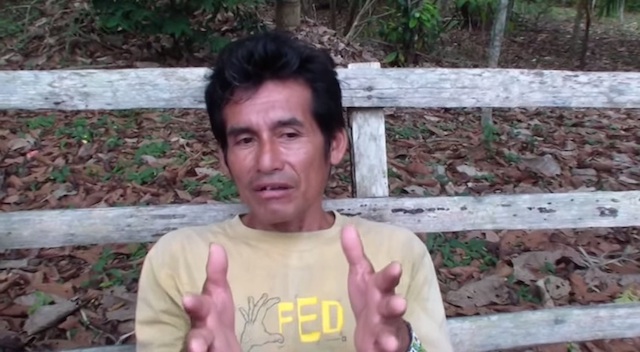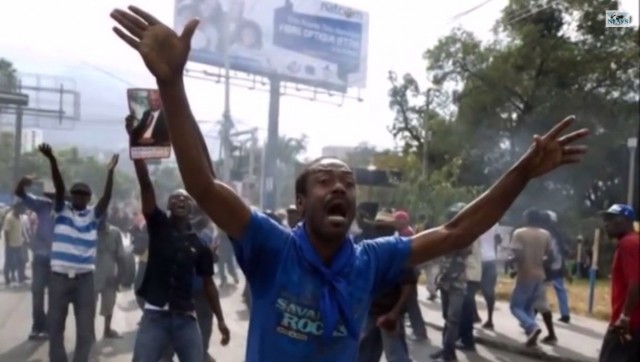
Latin America: Week in Review
Great Reads Round-Up: Jan. 4-11
January 11, 2015 By Staff
Latin America News Dispatch is happy to announce the latest addition to our weekly newsletter — Great Reads Round-Up. Here, you can see some of the week’s best feature articles on Latin America. Delivered every Sunday, Great Reads This Week places an emphasis on long-form journalism and in-depth analysis. Enjoy!
“A Bus Takes a Local Route to Fighting Mexican Corruption,” by Paulina Villegas. The New York Times. January 7, 2015.
Young activists in the Mexican city of Monterrey have built an innovative weapon in the fight against corruption: the Corruptour, a sightseeing bus tour that informs passengers of the corruption charges associated with local landmarks. Painted in garish colors and adorned with caricatures of local politicians, the bus is both a humorous and urgent response to the corruption epidemic that has plagued Mexico for decades. The country erupted in protests during the last months of 2014, after 43 students from Guerrero state went missing in September, having been allegedly executed by a drug gang acting in collusion with local police. While the missing-students crisis has laid bare the extent of corruption at a local level, one expert quoted in the article says that Monterey — where the Corruptour operates and which has seen success in combating local corruption — “is a perfect example of how the balance of powers can be overturned.”
“Six Women Murdered Each Day as Femicide Nears a Pandemic,” by Judith Matloff. Al Jazeera America. January 4, 2015.
The term “feminicidio” gained traction in Mexico in the 1990s due to a startling spike in disappearances and murder of women in Ciudad Juárez, the border town notorious for its high murder rate and strategic placement within the international drug trade. Two decades on, the numbers show no sign of abating. In Mexico state — where President Enrique Peña Nieto served as governor — the rate of femicide doubled from 2005 to 2011, and has surpassed that of Ciudad Juárez. Research by the National Citizen Femicide Observatory posits that six women every day are murdered in the country, with widespread misogyny playing a role not only in the alarming rates, but also in the negligible prosecution of perpetrators. While pressure from the international community has compelled legislators in Mexico to approve laws specifically targeting femicide, none of the new laws have been effectively enacted. In 2014, not a single femicide was prosecuted.
“America’s Dirtiest Cops: Cash, Cocaine and Corruption on the Texas Border,” by Josh Eells. Rolling Stone. January 5, 2015.
The border city of Mission, Texas, is at the heart of the rampant drug trade between the U.S. and Mexico. Designated by the Office of National Drug Control Policy as a “High Intensity Drug Trafficking Area,” tons upon tons of narcotics pass through Mission every year, and local gangs compete with one another over the lucrative trade. One of those gangs, it turned out, was a local police unit. Rolling Stone’s Josh Eells tells the story of the Panama Unit — an elite anti-narcotics unit described in the piece as “one of the most efficient drug robbery rings in Texas, taking money from some dealers and traffickers while using their weapons and cars to rob others.”
On the Open Road, Signs of a Changing Cuba,” by William Neuman. The New York Times. January 6, 2015.
All around Cuba there are signs of progress and signs of sameness. On a 565-mile journey across the island — from Havana to Guantanamo — reporter William Neuman noted a few of these signs, some figurative and others literal. Through the windows of a vintage Ford, he observes that the few vehicles that roam the roads are antiquated, cellular reception is abysmal and the biggest concern for many Cubans has shifted from politics to business and money. There are other signs, however, that he finds more encouraging. Small businesses like private restaurants are widespread, and as of 2011 “for sale” signs can be found on private residences.
“The Deadly Battle over Colombia’s Precious Metals,” by Nadja Drost. Vice. January 5, 2015.
As gold prices skyrocketed over the last decade — jumping from $279 an ounce in 2000 to $1,572 in 2011 — a gold rush swept through parts of Latin America. The boom created an industry on which a large number of impoverished workers have now come to rely for steady income. However, the gold rush has also come with a long list of negative consequences, such as environmental destruction, worker exploitation, human trafficking and a lucrative investment for organized crime. In the town of Segovia, Colombia, large paramilitary groups have become tightly involved in the trade, starting a bloody war over profitable mines that made the town one of the most deadly in the whole country.
Image: iose, public domain




